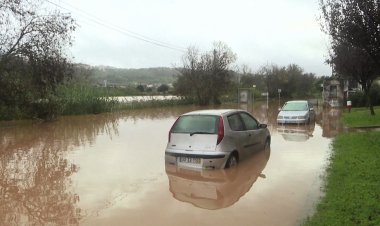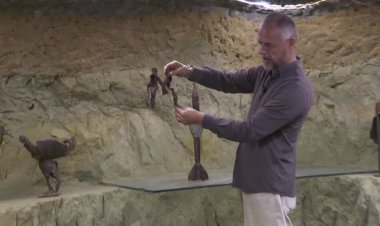The British shipwreck that changed the world
One of the worst disasters in British maritime history, the wrecking of HMS Association led to two acts of parliament and the establishment of longitude.

ur boat was only half a dozen miles out of St Mary's, the main island in the Isles of Scilly, but the sea had become a different beast entirely. The waters that lulled against the harbour walls were long gone, and as we arced around the Western Rocks – a notorious cordon of razor-sharp skerries at the very south-westerly reaches of England – the swell surged. Waves slapped against the bow as the boat keeled to and fro. The water was the colour of midnight, and I peered into the darkness for a sign of the HMS Association, one of 1,000 shipwrecks that lie splintering into the seabed around Scilly.
Two parallel reefs, much of which is submerged at high water, the Western Rocks posed a formidable threat to sailors bound for safe harbour in Tresco or St Mary's. And the names that each cluster of jagged granite has been given over the years – Inner Rags, Tearing Ledge – hint at the devastation wrought.
"It is doubtful if any collection of rocks in the whole of the British Isles has a worse reputation," said Richard Larn OBE, president of the International Maritime Archaeological & Shipwreck Society and author of Sea of Storms: Shipwrecks of Cornwall and the Isles of Scilly. "This immense area of hidden danger has been the setting for the worst of the many wreck disasters on Scilly." None, though, have been more tragic, nor played a more significant role in history, than the sinking of the Association in the early years of the 18th Century.
A 90-gun, second-rate English warship, HMS Association was the flagship of Sir Cloudesley Shovell, who had worked his way up from lowly cabin boy to become Admiral of the Fleet in 1705. Shovell had distinguished himself in the Nine Years' War and in early skirmishes of the War of the Spanish Succession, but after a summer spent (unsuccessfully) laying siege to the French port of Toulon, he set sail for home, departing from Gibraltar for England in late September 1707.
At around 20:00 on 22 October 1707, believing they were off the coast of Brittany and heading into the English Channel, the fleet ploughed on through the darkness and straight into the Western Rocks. The Association, under the command of Captain Edward Loades, struck the Outer Gilstone rock and sank within two minutes. Three other ships – the Eagle, the Romney and the Firebrand – were also wrecked. "The Weather being very hazy and rainy and Night coming on dark…some of them [were] upon the Rocks to the Westward of Scilly before they were aware. Of the Association not a Man was sav'd," reported the Daily Courant, Britain's first daily newspaper, at the time. Some 1,450 men were lost across the four ships, with only 24 survivors between them. It remains one of the worst disasters in British maritime history.
So how did the finest seamen of his age – as famous in his day as Lord Nelson was in his, according to Larn – get so completely, and catastrophically, lost? Foul weather didn't help, nor did the low-lying nature of the Scillies and their fringing reefs, which blend into the water's surface at night and in poor visibility. Analysis of the log books from the ships that did make it back to London also revealed the fleet's officers were using charts that misplaced the Isles of Scilly eight nautical miles to the north.
All these issues were compounded by the real problem – that in the early 18th Century, there was no accurate way of determining a ship's exact longitude (its east–west position) at sea. Sailors used a process called "dead reckoning", measuring speed, direction and distance to estimate their location. But it was an educated guess at best. Shovell and his officers knew they were aligned with the English Channel but could never have known which side of the Scillies they were.
You may also be interested in:
• Britain’s Mediterranean-like isles
• The shipwreck that birthed a nation
• The tiny isle with a wild, lawless past
Losing the Admiral of the Fleet and so many men alongside him, "stirred public opinion [and] was quoted as an illustration of the urgent need of a means to find longitude at sea," wrote curator Lieutenant-Commander David Waters in the catalogue for 4 Steps to Longitude, an exhibition at the National Maritime Museum in 1962. Larn goes a step further, believing that parliament introduced the Longitude Act of 1714 as a direct result of the disaster. The act offered a reward – the Longitude Prize – of £20,000 to whoever could produce a solution that was "practicable and useful at sea". Sir Isaac Newton and Edmond Halley (of comet fame) set their minds to the task, but the problem was eventually solved by a carpenter-turned-clockmaker from Yorkshire.
It took John Harrison 25 years and four attempts, but in 1759 he invented a marine chronometer that allowed a ship to calculate its longitude by comparing the difference in local time at sea with the time in Greenwich. His prize-winning pocket watch, known as H4, overcame the challenging conditions on board – the issues of motion and variation in temperature – and offered the stability required.
"H4 works in principle just like any other mechanical watch," explained Emily Akkermans, curator of time at the Royal Observatory in Greenwich, London. "But the difference is the level of precision [Harrison] achieved by using a 'high energy' balance that would beat faster than the smaller and lighter ones found in traditional watches."















